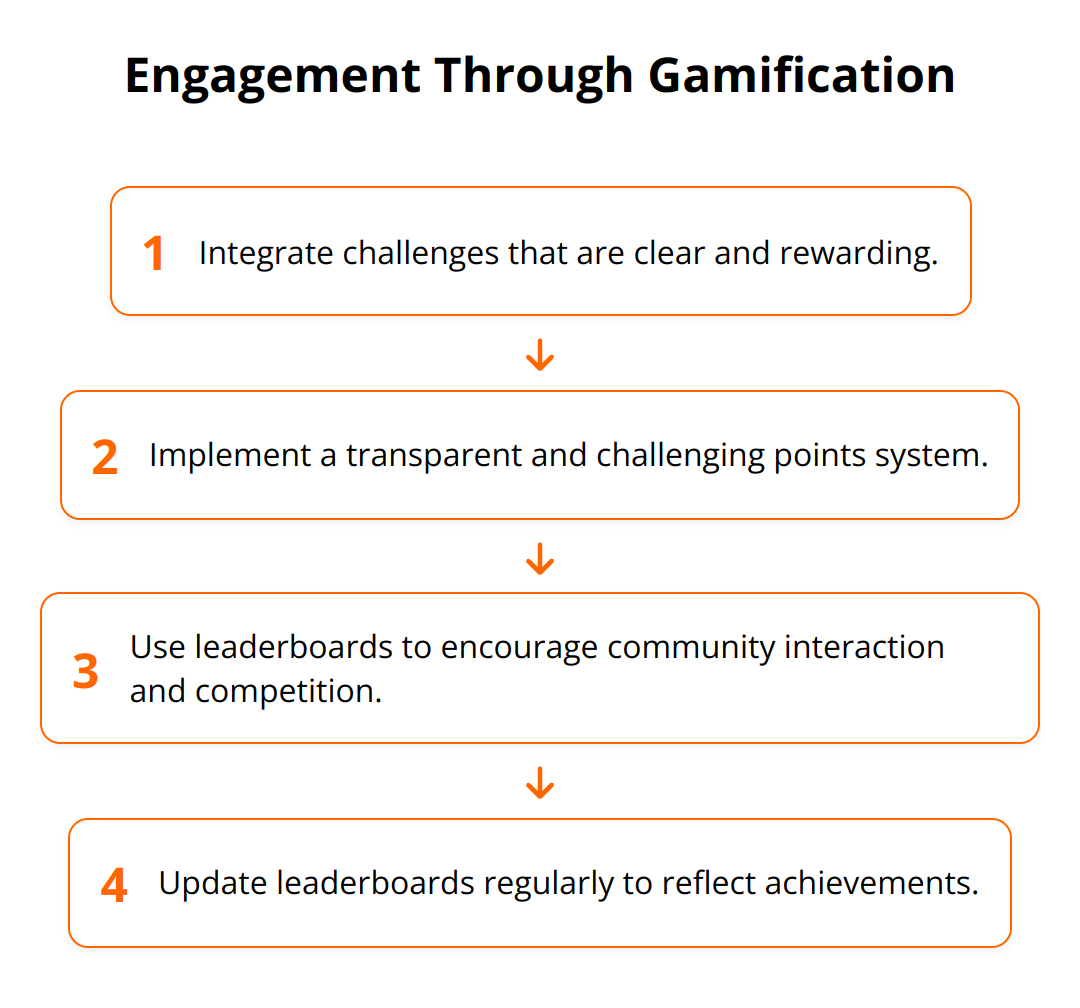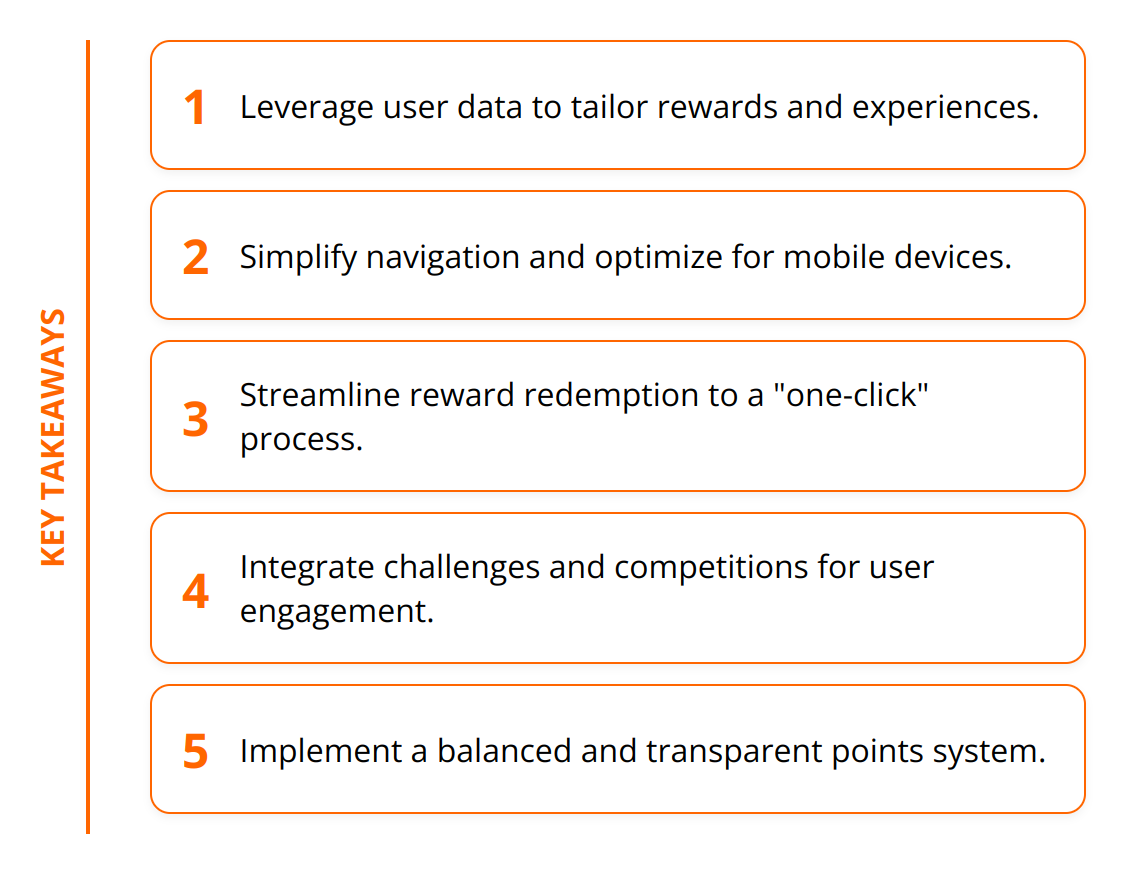
We at Reward the World understand the importance of a seamless and engaging user experience. In the competitive landscape of reward platforms, personalization, usability, and engagement are key to retaining users. This post: How to Enhance User Experience in Reward Platforms, aims to guide you through enhancing these aspects on any rewards platform. Let’s explore practical techniques to improve user satisfaction and loyalty.
Enhancing User Experience Through Personalization
In the digital age, a one-size-fits-all approach doesn’t cut it anymore. Users seek experiences tailored to their preferences and behaviors. To stand out, platforms must leverage user data efficiently, customize rewards, and incorporate feedback for constant improvement.
Leverage User Data for Personalization
The first step toward personalization is collecting and analyzing user data. Information such as browsing behavior, purchase history, and reward preferences provides valuable insights. It enables platforms to create a unique user profile. By utilizing data analytics tools, platforms can predict what offers or rewards a user might be interested in. The aim is to make every interaction feel like it was designed just for them.
Platforms should prioritize data privacy and transparency, making sure users are aware of how their data is used and giving them control over it. This approach not only complies with GDPR but also builds trust.

Customize Rewards to Match Individual Preferences
Customization is key to engagement. Once you have insights into a user’s preferences and behaviors, the next step is to tailor rewards accordingly. For instance, if data shows that a user frequently purchases books, offering them a discount at a bookstore can be more appealing than a generic discount.
Platforms should offer a variety of rewards to cater to different tastes. This could range from discounts and vouchers to exclusive access to products or services. The goal is for users to feel that engaging with the platform regularly brings them tangible benefits that are specifically aligned with their interests.
A crucial aspect is updating the reward offerings based on continuous user interaction and feedback. This ensures that the rewards remain relevant over time.

Act on Feedback for Continuous Improvement
Listening to your users is invaluable. Implementing a mechanism for collecting user feedback directly on the reward experience can unveil areas for enhancement. Whether it’s through surveys, comment sections, or direct communication channels, encourage users to share their thoughts.
Analyzing this feedback helps in identifying patterns or common issues faced by users. Acting on this feedback by making regular updates to the platform not only improves user satisfaction but also demonstrates a commitment to valuing user input.
For platforms looking to enhance their reward systems’ efficiency, adopting automated reward mechanisms can be a game-changer. Automating reward mechanisms streamlines the process, ensuring users get their rewards promptly, which enhances satisfaction and loyalty.
To sum up, personalizing user experience on reward platforms demands a strategic approach to data utilization, reward customization, and feedback implementation. Platforms that master these elements can expect higher user engagement, increased loyalty, and a competitive edge in today’s market.
Following these guidelines helps in creating a rewarding experience that users not only enjoy but also prefer over competitors.
Optimizing Platform Usability
Creating a seamless user experience is vital in today’s digital landscape, especially for reward platforms. Users expect quick, easy access to rewards, with minimal friction. In this chapter, we’ll explore practical strategies to enhance platform usability, focusing on navigation simplicity, mobile responsiveness, and the rewards redemption process.
Simplify Navigation for Ease of Use
The key to effective navigation is simplicity. Users should find what they’re looking for in three clicks or less. Over-complicated menus or cluttered interfaces can drive users away. Here are actionable tips:
- Use clear, descriptive labels for navigation items.
- Implement a search feature that can handle typos and synonyms.
- Regularly test your site’s navigation with real users to identify and eliminate pain points.

Enhance Mobile Accessibility
With over half of internet traffic coming from mobile devices, optimizing for mobile isn’t optional—it’s mandatory. A mobile-responsive design ensures your platform functions flawlessly across all devices. Key considerations include:
- Design with a mobile-first approach, ensuring core functions are easily accessible on smaller screens.
- Utilize responsive images and flexible grid layouts to improve load times and readability.
- Invest in thorough testing on various devices and browsers to guarantee consistent user experiences.
For insights into importance of mobile optimization, Improving mobile responsiveness offers valuable strategies.
Streamline the Reward Redemption Process
The process of redeeming rewards should be straightforward and satisfying. A complicated redemption process can diminish the perceived value of rewards, affecting overall engagement. Here’s how to make it better:
- Minimize steps required to redeem rewards. Aim for a “one-click” redemption experience where possible.
- Provide clear instructions and immediate confirmation once a reward is redeemed.
- Offer a variety of redemption options to cater to different user preferences.
Effective usability optimization is a continuous process, requiring regular feedback, testing, and iteration. By focusing on these three areas, reward platforms can significantly improve user satisfaction, leading to increased loyalty and usage. Always prioritize user needs and streamline their experience to keep them engaged and satisfied.
Next, we’ll discuss strategies for keeping your audience engaged with your platform long-term, ensuring they come back time and again for more of what they love.
Boosting Engagement with Gamification
Successfully enhancing user experience on reward platforms extends beyond personalization and usability; it taps into the innate human desire for achievement and recognition. Gamification is a powerful tool to boost engagement, making users more likely to return and interact with the platform. By introducing dynamics typically associated with games into non-gaming environments, such as reward platforms, users find the process of earning and redeeming rewards more enjoyable and compelling.
Making Challenges Work for You
Integrating challenges and competitions invites users to engage more deeply with the platform. The key is to design challenges that are clear, attainable, and, most importantly, rewarding. Challenges might range from completing a set of tasks within a timeframe to achieving specific goals that benefit both the user and the platform. The rewards for these challenges should be desirable and exclusive, making the effort to achieve them worthwhile. Additionally, these activities encourage users to explore parts of the platform they might not otherwise engage with, increasing overall platform stickiness.
Points Systems as a Motivator
A well-designed points system can significantly enhance user participation. Points act as a tangible measure of achievement, with users accumulating them to unlock rewards. The strategy lies in making the accumulation process transparent and the rewards attainable but challenging. Points can be awarded for a variety of user actions, including repeat logins, referrals, or completing platform-specific tasks. The trick is to balance the earning process so users feel rewarded without diluting the value of the points themselves. For further insights on creating effective points systems, the guide to points redemption optimization is an invaluable resource.
Leaderboards to Encourage Community
Leaderboards are not just a way to showcase top users; they’re a method to foster community engagement and friendly competition. By highlighting active users or those with the highest points, you give others a benchmark to aim for. The sense of community comes from users interacting, sharing strategies, and sometimes collaborating to achieve common goals. Leaderboards should be updated regularly to reflect real-time achievements and to give new users a chance to climb the ranks. Proper management of leaderboards ensures they remain a positive tool for engagement rather than discouraging new or less active users.

Key Takeaways:
- Design challenges that are rewarding and promote exploration.
- Balance point earning to maintain value and motivate users.
- Use leaderboards to foster a sense of community and friendly competition.
Gamification, when implemented thoughtfully, can transform a reward platform from merely transactional to genuinely engaging. The crucial aspect is to keep the game elements aligned with the platform’s objectives and the users’ interests. By doing so, platforms can expect higher engagement levels, deeper user involvement, and ultimately, a loyal user base eager to interact with the platform’s offerings.
Final Thoughts
Enhancing user experience on reward platforms revolves around three core strategies: personalization, usability, and gamification. By tailoring experiences to individual preferences, streamlining platform navigation, and incorporating engaging game-like elements, platforms can significantly boost user satisfaction and loyalty.

The importance of continuous user feedback cannot be overstated. It acts as a beacon, guiding the ongoing development and refinement of the platform. This iterative process ensures that services remain responsive to user needs and expectations, fostering an environment of trust and commitment.
We encourage reward platforms to consistently innovate and adapt. The digital landscape is ever-changing, with new technologies and user behavior patterns emerging regularly. Staying ahead requires a commitment to innovation, leveraging new insights and techniques to keep the platform fresh, exciting, and user-centric.
At Reward the World, we embody these principles. Our global incentives platform is designed to meet the evolving needs of businesses and users alike. By offering instant rewards, seamless integration, and robust analytics in 15 languages, we help our clients foster loyalty, increase conversions, and recognize employee contributions effectively.
Embracing these strategies describe on “How to Enhance User Experience in Reward Platforms” has enabled us to serve a massive 250 million-user base across various demographics and budgets, demonstrating the impact of a well-designed reward platform on user engagement and satisfaction. Our journey is a testament to the power of listening, adapting, and innovating to meet and exceed user expectations.
In conclusion, enhancing the user experience on reward platforms is an ongoing process that demands attention to detail, creativity, and responsiveness to feedback. By focusing on personalization, usability, and gamification, and by continually seeking user input for improvements, platforms can achieve higher engagement levels and foster long-term loyalty. As the digital world evolves, so too should our strategies for engaging and rewarding users. We hope this “How to Enhance User Experience in Reward Platforms” article is an effective practical guide to improve efficiency of your reward program.
